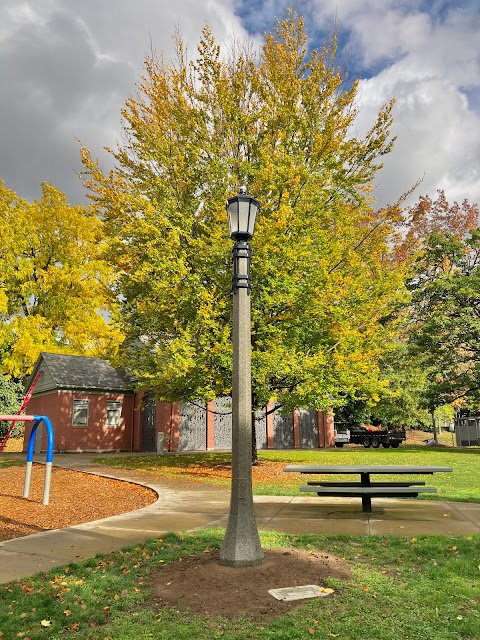'Enlightenment' in Portland Parks
Feb. 5, 2024
By: Fred Neeson
New pole and light (Portland Parks Bureau)
Preservation advocates had good reason to be worried last year when the Portland Parks Bureau started removing iconic vintage light poles from several parks, citing and damage from water and rust.
The Parks Bureau’s spotty record on preservation over the years prompted concerns about what the new lights might look like. But now there is good news: For all but the most particular observers, the new poles and lights will look substantially indistinguishable from the old ones.
Of course a lot of people simply won’t care what the new ones look like. However, lights are a contributing element to the appearance of a historic park … especially at night when their electric glow adds an attractive ambiance.
Because 88 lights and poles will be replaced in and near Mt. Tabor Park, which is listed on the National Register of Historic Places, the new equipment needed approval from the Portland Historic Landmarks Commission.
By a vote of 4-1, the majority found that the proposed poles and lights were “close enough” in appearance to the old ones that date to the mid-1920s. (The park itself was created in 1909.) Brett Horner, the Parks Bureau planning manager, said the new poles already have been placed in Duniway and Laurelhurst Parks, and also will be used as replacements elsewhere.
Old light and pole (Portland Parks Bureau)
The only significant difference in appearance is that the old poles showed a slightly taller polygonal base. Otherwise the poles and glass fixtures are substantially indistinguishable. One advantage of the new fixtures is that they will not allow light to escape from their tops to help reduce light pollution at night.
Horner said the old poles were attached to steel wires wrapped around rebar staples inserted in concrete. As water inevitably worked its way into the concrete poles, the steel wire suffered from corrosion, making them eligible for falling over. Water intrusions also leads to cracking and flaking in the concrete. Horner said the old anchoring system was a “very deficient design.”
Unlike the old poles, the new ones will be sunk five feet into the ground. Horner said holes will be bored only slightly larger than the bases of the new poles.
Maya Foty, the landmarks commissioner who voted against the light plan, said she wasn’t convinced the Parks Bureau had done enough research to determine that all lights in Mt. Tabor Park needed to be replaced. She also noted the differing appearance of the poles at ground level.
Join Building on History’s mailing list by writing “add me” to fredleeson@hotmail.com
Fred Leeson is a former president of the Bosco-Milligan Foundation and a member of the foundation's Board of Advisors.


